When caring for potted plants in your backyard nursery it is important to fulfill these 5 main tasks.
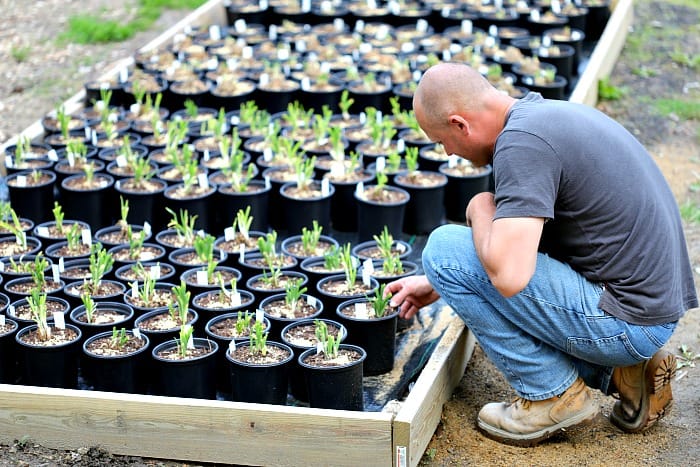
Its a funny feeling looking in your backyard after you just potted up hundreds of plants in your backyard nursery. A part of you feels very proud of all the work you have accomplished and it is easy to imagine exchanging fully grown plants for piles of cash.
But just as you begin to feel a sense of pride, reality usually kicks in and with that is the realization that you have to care for these plants for several weeks, months, or even years.
In order to fulfill your dreams of growing healthy plants and turning them into profits you need to constantly monitor and manage them over their life as a potted plant in your backyard nursery.
It really comes down to… 6 main tasks when caring for potted plants in your backyard nursery.
1- Irrigation
This is one of the hardest parts since the weather is always changing. You want to make sure you monitor your irrigation on a daily basis if possible. I am constantly sticking my finger into my containers to make sure they are damp but not soaking wet.
At this point in time I have a pretty simple irrigation system. Look closely at the picture below. You will see several stakes with rotary sprinklers on them attached to garden hoses.
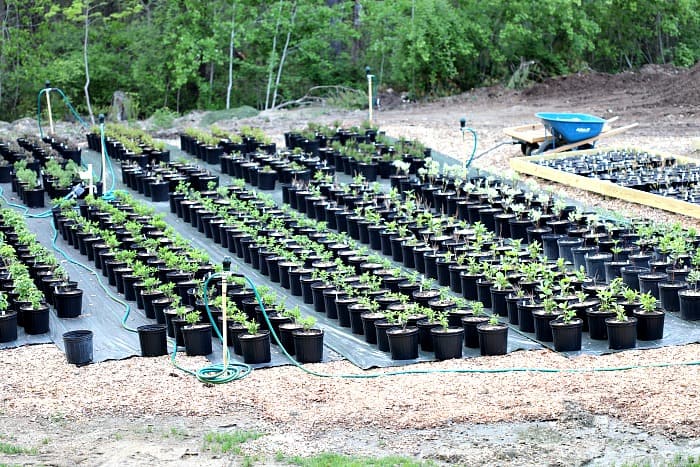
I use hoses to connect 3 sprinklers together to make up one zone. (If you don’t have good water pressure then only use 2 sprinklers per zone.) I have a total of 4 zones. Those 4 zones are connected by this automatic, programmable timer.
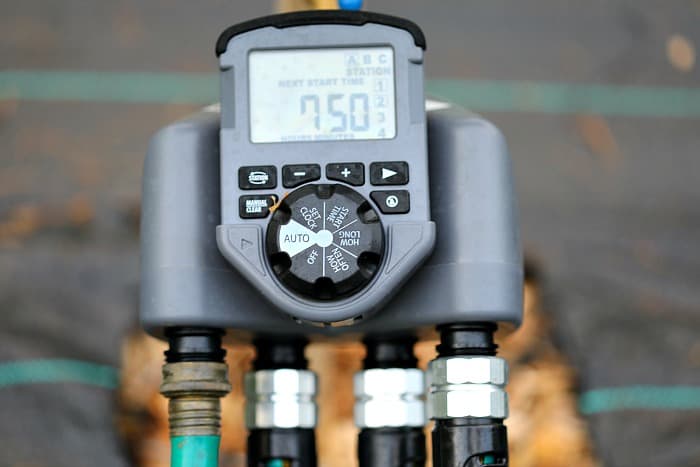
The automatic timer above is one of the best investments you can make when growing plants. It allows you to program times of day that each zone will come on and for how long.
I try and do most of my watering in the early morning hours, leaving a little time between zones so my well can recharge. In the hot summer months, I will do a mid-day watering. The trick to irrigation is to constantly be observing the weather and adjust accordingly.
2- Weeding
Weeds are definitely best dealt with early on. The more mature a weed gets the harder it is to remove and the more damaging it is to the plant. I use a product called Preen to prevent weed seeds from growing. I usually do 2-3 applications a year, but it certainly doesn’t get rid of my weeding responsibilities. It only reduces them.
I find the best way to tackle weeding is to simply walk around your plant area a couple of times a week and just pull weeds as you see them. This is a great thing to do casually as you are doing your routine inspections.
3- Pruning
Pruning is so important when caring for potted plants. Pruning is the only way to get thick, full plants. Take a look at the pics below. Look at the Forsythia before I pruned it. It is tall and lanky. No one wants a plant that looks like this. You have to aggressively prune your plants when growing them so they grow into a nice full shape.
Before Forsythia pruning…
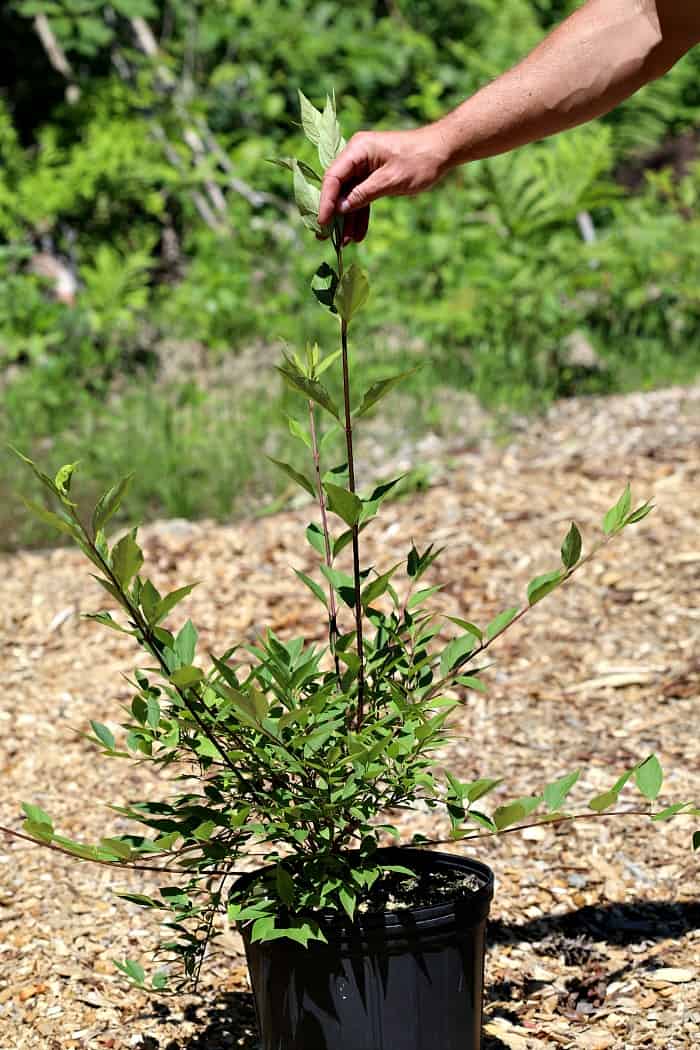
After pruning…
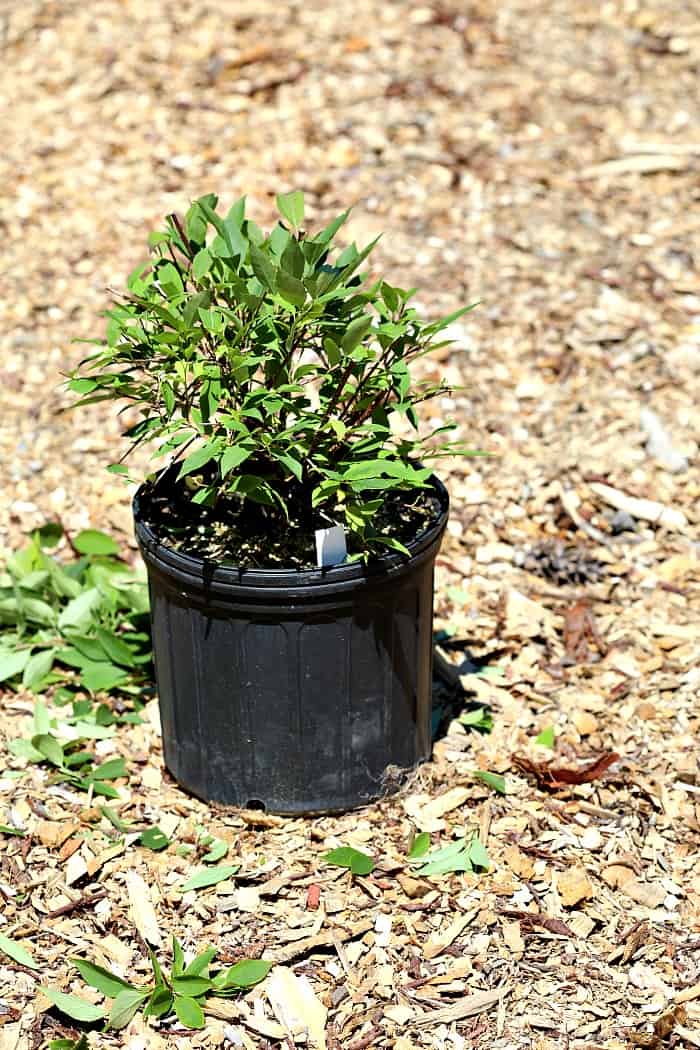
My favorite tool for pruning is a very basic electric hedge trimmer. I can prune thousands of shrubs a day with this trimmer. Most plants in my nursery are small since they are in 3 gallon containers or less so the electric trimmer is plenty strong enough.
It’s also nice to not have to worry about gas or pulling a cord every time I start and stop, which is a lot. I also appreciate the reduced noise and vibration.
Pruning shrubs twice a year is recommended. Once in late spring and again in late summer.
I don’t give much thought to whether or not I’ll be pruning off flowers or next years buds or anything like that. I am trying to get these plants well branched. That is all I care about early on.
In addition to encouraging thicker branches, pruning helps shape plants, and it is also a great way to increase airflow and prevent disease.
4- Fertilizing
It is important to feed your plants at least once a year in the beginning of the season, using a slow release fertilizer. Without fertilizer, your plants will not be getting much nutrients. Don’t forget, potting mix is meant to be well draining, not organic rich soil.
So to provide your potted plants with the nutrients they need I recommend at least one application of Osmocote a season. Osmocote is a very slow release fertilizer that will last several months.
For one gallon plants I like to apply one tablespoon of osmocote. For three gallon plants I use two heaping tablespoons.
5- Disease and Insect control
Honestly, I pretty much do nothing at this point for disease and insect control. Yes, I do lose some plants to diseases. I’ve barely lost any to insects as far as I can tell.
This year however I do plan on experimenting with some fungicides to control leaf spot and powdery mildew and some other diseases. But if you do a good job keeping a clean growing area with good drainage, and air circulation, you will find that you are able to prevent most of your problems.
6- Winter Protection
One of the hardest parts of caring for potted plants is watching them as they lose their leaves and go dormant in preparation for the winter. Although this is normal, and necessary for plants, its hard to say goodbye to luscious green leaves and flowers.
At this point, you have one main mission. Get them to survive the winter! There are a couple of different ways to simply, and effectively protect your plants from the winter elements.
Whether its the doldrums of winter, or a heat wave in mid summer, it is important to constantly be managing the health of your plants in your backyard nursery. Keeping a large amount of plants healthy can be both frustrating and rewarding.
Diseases, pests, and irrigation problems can overtake your backyard nursery quickly. It is important to mitigate problems early before things get out of hand.
Constant observation is important but don’t forget that losing plants is part of the deal! Don’t allow losses to cloud your judgement or ruin your spirit.
Check Out These Posts Next
Potting Up and Labeling Plants
Follow Me
Join my free email list!


Leave a Reply